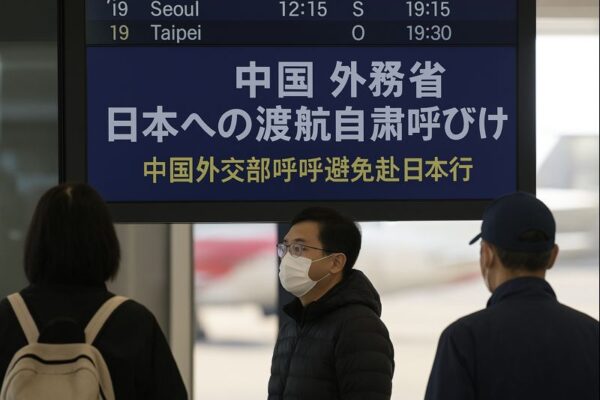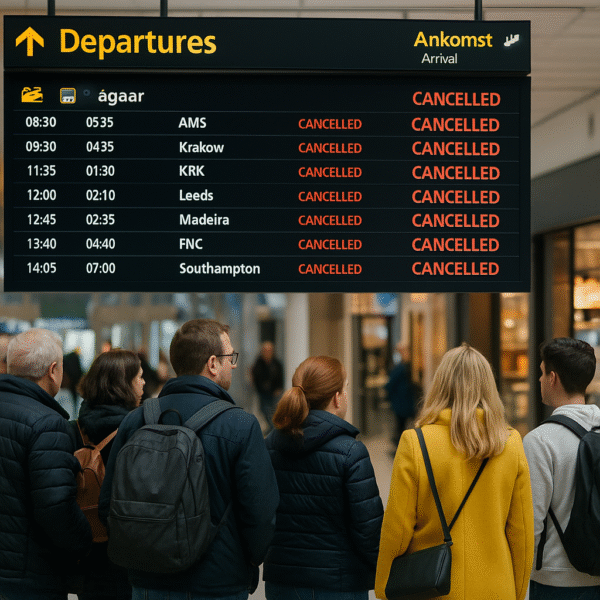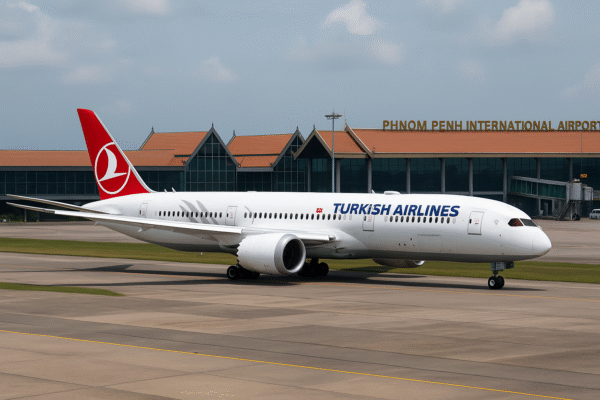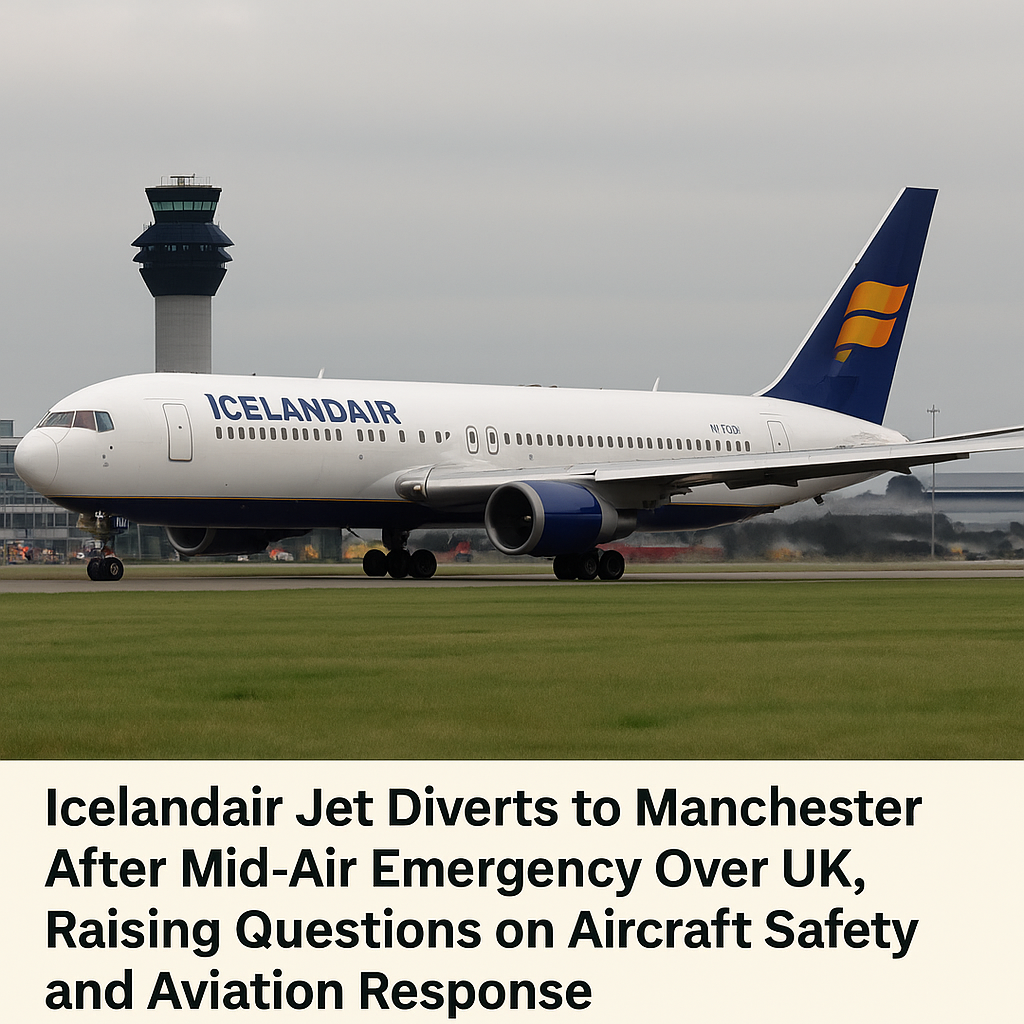Manchester, UK – A routine ferry flight by Icelandair from Paris Charles de Gaulle Airport to Keflavik International Airport took an unexpected turn on Thursday, triggering a mid-air emergency over UK airspace and prompting an urgent diversion to Manchester Airport. The Boeing 767-300ER aircraft, designated as flight FI5443, was not carrying passengers but captured international attention when it issued a general emergency squawk 7700 while cruising near Liverpool.
This event, although resolved without injuries, is a stark reminder of the importance of robust aviation safety protocols—even on non-commercial flights.
What Happened Mid-Flight?
Flight FI5443 took off from Paris at 15:36 CEST, delayed by more than five hours. Shortly into the flight and cruising at standard altitude, the aircraft abruptly initiated a descent. Aviation trackers and live radar services picked up the emergency squawk, a code universally used to indicate serious mechanical or operational issues.
Within minutes, air traffic controllers cleared a diversion route to Manchester Airport, one of the UK’s key emergency diversion hubs capable of handling large aircraft. The aircraft safely landed on runway 23R at approximately 15:57 BST, escorted by emergency services including fire trucks and airport ground units. By 16:02 BST, the aircraft had taxied to a remote stand for further inspection.
Why the Flight Was Significant Despite No Passengers
Although the aircraft was operating a ferry flight—meaning no commercial passengers were onboard—it still carried critical implications for Icelandair’s fleet logistics. The aircraft, registered TF-ISW, is a 27-year-old Boeing 767-300ER, primarily used for repositioning and maintenance routing.
Older aircraft, even when not in commercial service, are subject to strict maintenance schedules. A mid-air issue on such a jetliner immediately raises red flags for both safety inspectors and airline operations teams. The 7700 squawk isn’t used lightly—it prompts full alert status from air traffic control and requires emergency ground support at the chosen diversion airport.
Manchester Airport’s Role in Crisis Handling
Manchester Airport once again demonstrated its readiness as a Category 10 emergency diversion airport. Its ability to rapidly accommodate widebody aircraft, coordinate emergency responders, and ensure safe clearance for priority landings made it an ideal alternate for FI5443.
As fire crews staged near the tarmac and aviation officials coordinated aircraft movements, the event was handled without incident or disruption to broader air traffic. The swift landing and response underscore the seamless integration of airspace management across the UK’s Civil Aviation Authority (CAA) network.
Aviation Safety and the Challenge of Aging Aircraft
The incident raises broader industry questions about aging aircraft still in operation across transatlantic and European airspace. Icelandair, like many mid-sized carriers, maintains a diverse fleet that includes older Boeing models for logistical and charter missions.
As fuel efficiency mandates tighten and passenger expectations evolve, older aircraft are increasingly scrutinized. Mechanical snags, while not uncommon, emphasize the importance of preventive maintenance and prompt emergency decision-making.
With Europe entering the peak summer travel season, airlines are under added pressure to keep operations smooth without compromising safety. Flight FI5443 reminds us that behind every smooth airport experience lies a network of risk mitigation and crisis planning.
Are In-Flight Emergencies More Common—or Just More Visible?
With flight tracking apps and live aviation data feeds now publicly available, events like FI5443’s emergency become viral within minutes. What was once a quiet detour is now a headline.
But aviation experts urge caution in interpreting these events as increasing in frequency. In reality, the aviation sector today is safer than ever, with better monitoring systems, advanced diagnostics, and highly trained crews capable of responding in real time.
The perceived spike in aviation incidents is often a reflection of improved transparency rather than deteriorating safety standards.
Industry Response: Trust Through Transparency
While there were no passengers onboard, Icelandair will undoubtedly treat this incident with full procedural rigor. Post-landing, the aircraft was grounded for inspection, with maintenance crews from Icelandair and UK regulators conducting thorough diagnostics.
The airline has not released an official statement, but sources indicate the technical issue was non-critical yet sufficient to warrant caution—a wise move in a sector where precaution is paramount.
This response aligns with public expectations for transparency, especially in an era where trust defines brand reputation. Airlines that openly report and resolve mechanical events tend to retain higher consumer confidence.
What This Means for Travelers
Though FI5443 was a ferry flight, incidents like these indirectly influence passenger confidence, airline reputation, and travel industry resilience. They reinforce the importance of consistent fleet monitoring and the capabilities of European airports to respond under pressure.
For Manchester Airport, the successful handling of this emergency affirms its role as a major player in UK aviation resilience. For Icelandair, it marks a successful exercise in operational safety that may influence how ferry flights are planned and monitored in the future.
Conclusion: Precision Under Pressure
The mid-air emergency involving Icelandair flight FI5443 highlights the strength of Europe’s aviation safety infrastructure. From the cockpit crew’s prompt action to Manchester Airport’s efficient ground response, the incident showcases how aviation systems are built not just to fly, but to handle the unexpected with calm and competence.
As European skies grow busier this summer, and travelers take to the air with renewed enthusiasm, one truth remains: every flight, full or not, is backed by a global network of professionals ensuring it arrives safely.
This is the untold story behind a diverted flight—and a quiet triumph of aviation excellence.
For more travel news like this, keep reading Global Travel Wire



















